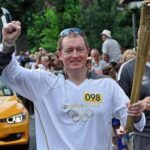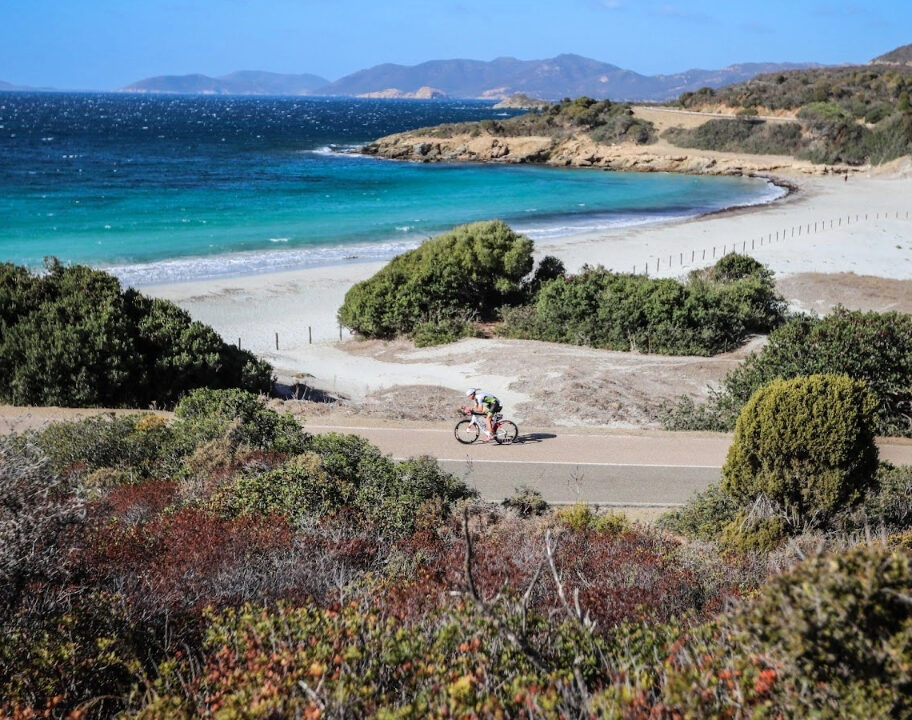If you are new to triathlon then it’s likely you are also considering aquathlon – and the good news is we are here to give you the full lowdown with a guide to aquathlon for beginners.
There are not only a ton of different distances for triathlon, there are also a number of different formats. One of the most popular multisport event options is aquathlon.
How is aquathlon different to triathlon?
Triathlon of course is made up of a swim, a bike and run. While the most common format of aquathlon racing is a swim followed by a run, also sometimes referred to as a ‘splash and dash’.
Some aquathlon events, which typically require a minimum water temperature for safety, will be held over a run-swim-run format.
Aquathlon distances
So, how long is an Aquathlon? There is no simple answer to that question.
As with triathlon racing, there are no restrictions on the distances which aquathlon races can be held over. That said, the vast majority of aquathlon events are relatively short in terms of distances.
World Triathlon, the governing body, holds an Aquathlon World Championship event every year, which includes 2.5km run / 1km swim / 2.5km run (where water is 22°C or above), or 1km swim / 5km run with lower water temperatures.
In the UK, it would be more common to see a 750m swim / 5km run.
The relatively short distances of most aquathlon races means preparation time and recovery from events is significantly less. Combined with lower costs and simplicity, that adds further to the opportunity to race in aquathlon events frequently. Taking part in an aquathlon is also a great way to dip your toe into the world of multisport – without needing a road bike.
Aquathlon kit guide: What do you need to wear to do an aquathlon?
Here are the key elements of kit you we would suggest for taking part in an aquathlon, along with a few additional tips:
Swimming goggles and cap
Often the race organiser will provide you with a swim cap which you must wear for the race. But even if a cap isn’t provided, it’s still a good idea to wear one. For safety reasons, a swim cap is usually compulsory as it makes it far easier to spot swimmers in open water. And it will also help to keep you hair out of your eyes – plus, it’s more hydrodynamic. If the water is cold, you could also wear an additional swim cap underneath the official race cap, as this will help to keep your head warmer. Avoiding the ‘ice cream headache’ effect.
Goggles aren’t compulsory. But you’ll be a lot more comfortable in the water if you wear them. Look for a pair of goggles which are suitable for both the swimming pool and open water. A tinted or mirrored pair is usually a good idea to protect your eyes from the glare of the sun and make it easier to see where you’re going.
RELATED: TRI-FIT RAPID X Swimming Goggles review
Swimming wetsuit
If you’re planning to participate in an aquathlon which features an open water swim, you’ll want to wear a swimming-specific wetsuit. Offering additional buoyancy and warmth, swimming in a wetsuit is typically faster than swimming without one. However it’s worth knowing that if the water temperature is above a certain level, wetsuits may not be allowed to avoid athletes over heating. Check out our guide to swimming wetsuits for more information on the benefits of a wetsuit, how it should fit and what to wear under it. You can also take a look at our top picks of the best triathlon and open water swimming wetsuits.
Tri suit
Of course, you could take part in an aquathlon wearing your swimsuit/jammers and put a vest or t-shirt on over the top for the run. But keep in mind that trying to put clothing on when you’re soaking wet is challenging – and time consuming! And running in your swimwear might be rather uncomfortable. A tri suit is an all-in-one item of sportswear which is designed for swimming, cycling and running. You can wear it for the whole event, so you won’t waste time changing clothes. We’d always recommend wearing a tri suit for an aquathlon.
Running shoes
You’ll want a comfortable, supportive pair of running shoes for an aquathlon. Just don’t wear brand new ones for the first time on race day! As most Aquathlon races are relatively short, you may choose not to wear socks to save transition time. But there is a risk of getting some rather nasty blisters, so plenty of people – beginners and experienced athletes alike – will choose to take the time to put some sock on to save their feet. Whether you wear socks or not, putting some talcum powder into your shoes prior to the event will make wet feet slip into your shoes more easily. Another time-saving tip is to use elastic laces or lace-lock systems. These allow you to slip your feet into your shoes without having to tie laces, but they lock the shoes down so you won’t be slipping around.
Race belt
Most events will require you to display a paper-style number, usually on your front, during the run leg. Tri suits are generally tight-fitting and technical garments which are not designed to have safety pins put through them. A simple race belt is cheap to buy and you can pin your race number to it. Simply slip/clip it around your waist in transition before your start the run leg. We can tell you from experience that is far more preferable than putting holes into potentially expensive racing kit! A race belt will typically last years too and is a great addition to any multisport athlete’s kit bag.
Hat/Visor/Glasses
All optional, but on a sunny/hot day, one or more of these may make your run more comfortable – personal preference!
What are the benefits of taking part in aquathlon?
Because of the absence of the cycle leg, Aquathlon has several attractive characteristics:
- Without the logistics and related costs of a bike course, aquathlon races are typically far simpler to organise and take less time.
- As a result, aquathlon events are typically cheaper to enter for competitors than triathlon races.
- For newcomers to the multisport world, a bike and the related equipment is typically the greatest initial cost. Aquathlon events are thus a great entry point.
- For athletes – beginners or experienced – the relative simplicity in terms of kit and typically low costs, can make them a very attractive option to race frequently, even as a training events towards other triathlon goals.
Talent spotting!
An interesting note is that swim and run performance is often used by governing bodies when trying to identify talent for triathlon, with cycling ability (initially at least), a secondary consideration.
The technical nature of swimming and a natural aptitude for running fast are considered crucial to Elite level senior success in triathlon. If an athlete has those strengths, developing their cycling skills from a low(er) base has consistently proven to be a more successful path than, for example, taking a great cyclist and trying to make them a fast swimmer.











